An In-Depth Manual for Water Damage Restoration
Water damage can strike unexpectedly, wreaking havoc on homes and properties. When water intrudes, whether through leaks, floods, or plumbing mishaps, it’s crucial to act swiftly to mitigate its effects. Welcome to our comprehensive guide on water damage restoration, where we’ll walk you through the essential steps to take when faced with this challenging situation. The consequences of untreated water damage can be far-reaching, from structural deterioration to mold growth, which can compromise both your property’s integrity and your health.
By understanding the types and causes of water damage, as well as the immediate actions required, you can minimize the extent of the damage. In this guide, we’ll not only outline the steps to restore your space but also emphasize the importance of professional assistance for a thorough restoration process. Your prompt and informed response today can safeguard your property’s tomorrow.
Types and Causes of Water Damage
Water damage comes in various forms and originates from a multitude of sources. Understanding the different types and causes is crucial for effectively addressing the aftermath of such incidents.
Types of Water Damage:
1. Clean Water Damage: This results from sources like burst pipes, leaking faucets, or rainwater entering through a well-sealed roof. While initially clean, prolonged exposure can lead to contamination.
2. Gray Water Damage: Gray water contains some level of contamination, often from appliances like washing machines, dishwashers, or clean water mixing with dirt. This water can cause illness if ingested and requires careful handling.
3. Black Water Damage: The most severe type, black water includes sewage, flooding from rivers, or standing water that has collected bacteria, fungi, and other harmful substances. It poses serious health risks and requires professional intervention.
Common Causes:
1. Leaky Plumbing: Deteriorating pipes, faulty connections, or plumbing system malfunctions can lead to water accumulation within walls or beneath floors.
2. Natural Disasters: Floods, storms, hurricanes, and heavy rainfall can result in widespread water damage, impacting both exterior and interior spaces.
3. Appliance Malfunctions: Malfunctioning appliances like water heaters, washing machines, and dishwashers can release significant amounts of water.
4. Roof Leaks: Damaged roofs, missing shingles, or poor sealing can allow rainwater to penetrate and cause structural damage.
5. Poor Drainage: Improperly directed rainwater, blocked gutters, and inadequate drainage systems can lead to water pooling around foundations.
By recognizing the type and source of water damage, you can determine the appropriate course of action. Swiftly addressing the root cause and implementing the right restoration steps can help mitigate further damage and prevent potentially costly and hazardous consequences.
Immediate Steps After Water Damage
In the event of water damage, your immediate actions can make a significant difference in minimizing the extent of the damage and protecting your property. Here’s a step-by-step guide to follow immediately after discovering water intrusion:
1. Prioritize Safety: Before you do anything else, ensure your safety and that of your family. Turn off electrical power to affected areas to prevent the risk of electric shock.
2. Identify and Halt the Source: If possible, locate the source of water intrusion and take steps to stop it. Shut off the main water supply in case of plumbing issues or leaks.
3. Protect Valuables: Safeguard important belongings by moving them to a dry area. Items like documents, electronics, and sentimental valuables should be elevated and away from water.
4. Begin Extraction: Remove standing water using available tools like buckets, mops, and towels. This immediate action helps prevent further saturation of materials and reduces the risk of mold growth.
5. Promote Ventilation: Open windows and doors to enhance air circulation. This helps moisture evaporate and aids in the drying process.
Remember that time is of the essence when dealing with water damage. Swift action can prevent the situation from worsening and significantly reduce the cost and complexity of the restoration process. If the damage is extensive or involves hazardous conditions, it’s best to wait for professionals to ensure your safety and the thorough restoration of your property.
IV. Calling in the Professionals
When it comes to water damage restoration, professional expertise is invaluable. Trained restoration professionals have the knowledge, equipment, and experience to assess the situation accurately and implement effective restoration strategies.
Assessment: A qualified restoration team will conduct a thorough assessment of the extent of the damage. This includes identifying areas with hidden moisture, potential mold growth, and structural weaknesses that might not be apparent at first glance.
Advanced Equipment: Professionals use specialized equipment such as moisture meters, infrared cameras, and industrial-grade dehumidifiers to ensure a comprehensive drying process. This equipment helps pinpoint moisture pockets and tracks the progress of drying over time.
Efficient Drying: Restoration experts follow a systematic approach to drying, strategically placing air movers and dehumidifiers to expedite the evaporation of moisture. This not only prevents further damage but also reduces the risk of mold growth.
Mold Prevention: Professionals understand the conditions conducive to mold growth and take steps to prevent it. If mold is already present, they have the expertise to safely remove it and prevent its spread.
Structural Integrity: Water damage can compromise the structural integrity of a building. Restoration professionals assess any structural damage and recommend repairs, ensuring the safety of the property.
Insurance Liaison: Restoration companies often assist in the insurance claims process by providing documented evidence of the damage, the restoration process, and the costs involved. This can help expedite the claims process and maximize your coverage.
Documenting for Insurance Claims
Thorough documentation is essential for successful insurance claims. Insurance companies require clear evidence of the damage and the steps taken to address it.
Photographic Evidence: Capture detailed photos and videos of the damage before any cleanup or restoration begins. Include images of affected areas, damaged belongings, and visible signs of water intrusion.
Written Descriptions: Provide written descriptions of the damage, detailing the areas affected, the potential causes, and any visible changes to the property’s condition.
Receipts and Reports: Keep all receipts for expenses related to the restoration process, including professional services, equipment rental, and replacement materials. These receipts can help support your insurance claim.
Communication: Maintain open communication with your insurance provider throughout the process. Share documentation promptly and provide updates on the restoration progress.
Drying and Dehumidification Process
Proper drying and dehumidification are critical to preventing further damage and mold growth. Professionals use a combination of techniques and equipment to ensure effective drying:
Extraction: High-capacity pumps and vacuums are used to remove standing water quickly and efficiently.
Dehumidification: Industrial-grade dehumidifiers are strategically placed to remove excess moisture from the air and surfaces.
Air Movement: Powerful air movers create optimal air circulation, promoting evaporation and drying.
Monitoring: Moisture levels are regularly monitored to track progress and adjust equipment as needed.
Remember, a thorough and controlled drying process is essential to prevent lingering moisture, which can lead to structural issues and mold growth. It’s a task best handled by professionals equipped with the right tools and expertise.
Mold Prevention and Treatment
Water damage often paves the way for mold growth, which can pose health risks and further structural damage. Preventing and addressing mold requires specialized knowledge and equipment:
Prevention Measures: Professionals apply antimicrobial treatments and use moisture barriers to prevent mold growth in susceptible areas.
Early Detection: Restoration experts are trained to spot early signs of mold and address them before they become a significant issue.
Safe Removal: If mold is present, professionals follow strict protocols for its safe removal, preventing its spread to unaffected areas.
Mitigating Health Risks: Restoration professionals wear protective gear to safeguard themselves and occupants from mold-related health risks during removal.
By engaging professionals for mold prevention and treatment, you ensure a safe and thorough restoration process, reducing the potential for future complications.
Repair and Restoration
After the drying process is complete, the focus shifts to repairing and restoring the areas affected by water damage. This phase involves addressing structural issues, replacing damaged materials, and restoring your property to its pre-damage condition.
Structural Repairs: Professional contractors assess and repair any structural damage that occurred due to water exposure. This might involve reinforcing weakened walls, ceilings, and foundations.
Material Replacement: Damaged materials, such as flooring, drywall, insulation, and electrical components, are replaced with new, high-quality materials.
Seamless Restoration: Skilled restoration teams ensure that the repaired and replaced elements seamlessly blend with the unaffected parts of your property. This includes matching paint colors, textures, and finishes.
Quality Control: Thorough quality checks are conducted to ensure that the repaired areas are sound and free from any hidden issues that might have been missed during the initial assessment.
Future Prevention and Maintenance
Once your property is restored, it’s essential to take measures to prevent future water damage:
Regular Inspections: Schedule routine checks for plumbing leaks, roof damage, and any potential sources of water intrusion.
Proper Landscaping: Ensure that your property’s landscaping promotes proper drainage, directing water away from the foundation.
Foundation Maintenance: Keep an eye on your property’s foundation for cracks and vulnerabilities that could allow water entry.
Appliance Maintenance: Regularly inspect and maintain appliances like water heaters, washing machines, and dishwashers to prevent leaks.
Emergency Plan: Develop a clear plan for what to do in case of future water damage, including contact information for restoration professionals and insurance providers.
By actively preventing future water damage and promptly addressing any issues that arise, you can protect your property and save yourself from the stress and expense of another restoration process.
Conclusion
Water damage restoration is a complex process that requires swift action, professional expertise, and thorough documentation. By understanding the types and causes of water damage, taking immediate steps to mitigate the damage, and enlisting the help of professionals, you can navigate the restoration journey effectively. Remember that every minute counts when it comes to water damage, and your proactive response today can preserve the integrity and value of your property tomorrow.

